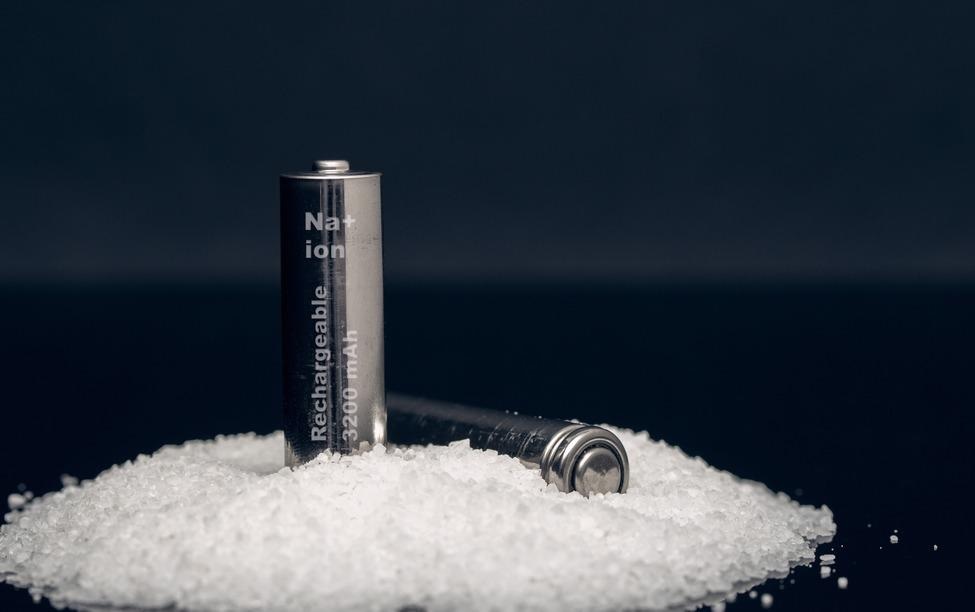Lithium-ion batteries work well for energy storage, however, due to the high cost and environmental issues, which is associated with lithium metal, there have been concerns with long-term use. This has led to the search for alternative energy storage that is more sustainable.

Image Credit: gcarnero/Shutterstock.com
Researchers from the Chalmers University of Technology, Sweden, are currently developing an optimum and effective electrode material for use within sodium batteries. These batteries provide a sustainable alternative to lithium-ion batteries as they are cost-efficient and more abundant. However, due to its low capacity, they currently cannot compete with high-performance lithium batteries. The Swedish research team hope to reduce the gap between these energy storage technologies, providing a path towards more sustainable battery solutions in the energy industry. This article will provide an overview of this research and how graphene was utilized to meet green energy demand.
Janus graphene, known as a novel nanomaterial, is a novel sustainable energy storage solution that could improve the workings of sodium-ion batteries. This revolutionary idea which provides an alternative to lithium-ion batteries is under development by scientists at the Chalmers University of Technology, Sweden.
Sodium-Ion Battery Challenges
Sodium is an abundant, cost-efficient metal. It is readily available, from being found in seawater, to being used in kitchen salt. Despite this, a large obstacle prevents its use as the main energy storage solution; its low capacity.
Graphite is currently a limiting factor as it is used as an anode in lithium-ion batteries. Here, ions are able to intercalate in the graphite and move in and out of the graphene layers, and then be stored for energy. Due to sodium ions being larger in structure than lithium ions, the interaction is not the same, and so the sodium ions cannot be stored effectively within graphite.
To overcome this challenge, a novel solution has been proposed through the use of Janus graphene.
Janus Graphene: The Innovative Solution
Published within the journal Science Advances on May 28th, 2021, researchers observed the utilization of Janus graphene for increased sodium-ion capacity.
Here, stacked graphene sheets were used with one side functionalized with a molecule that acted as a spacer as well as an active site for sodium ions. Here, stacked graphene sheets were used with one side functionalized with a molecule that acted as a spacer as well as an active site for sodium ions. Electrostatic interactions and the connections made via covalent bonds provided a unique stacked Janus graphene structure. This enabled the layout to have uniform pore size as well as control over the functionalization, which would be beneficial for energy capacity.
[We] added a molecule spacer on one side of the graphene layer. When the layers are stacked together, the molecule creates larger space between graphene sheets and provides an interaction point, which leads to a significantly higher capacity.
Jinhua Sun, Lead Researcher, Department of Industrial and Materials Science, Chalmers University of Technology
The sodium intercalation capacity within graphite works more effectively in lithium-ion batteries, consisting of 35 milliampere hours per gram (mA h g-1). It is one-tenth of the lithium-ion capacity, illustrating the inefficiency of sodium-ion batteries that utilize a graphite anode.
The novel research undertaken by Sun et al (2021) would aim to improve the energy storage capacity of sodium ions with the use of Janus graphene, increasing the capacity of sodium intercalation to 332 milliampere hours per gram. In doing so, sodium-ion batteries may become a sufficient competitor for lithium-ion batteries.
The Future of Janus Graphene Sodium-ion Batteries
Janus graphene is a promising energy solution and could revolutionize the energy market, including electronics and technology, providing a cheaper and more sustainable alternative to lithium-ion batteries.
Professor Aleksander Matic from the Department of Physics within the Swedish university commented on his excitement when they “observed the sodium-ion intercalation with such high capacity"
The research is still at an early stage, but the results are very promising. This shows that it's possible to design graphene layers in an ordered structure that suits sodium ions, making it comparable to graphite.
Aleksander Matic, Professor, Department of Physics, Chalmers University of Technology
Engineering high-capacity energy storage with the use of more cost-efficient and sustainable materials will aid in driving the future of battery technology forwards, as it can provide long-term solutions without environmental issues. Additionally, further research would aid the advancement of this technology for novel applications in electronics.
References and Further Reading
Sun, J., Sadd, M., Edenborg, P., Grönbeck, H., Thiesen, P., Xia, Z., Quintano, V., Qiu, R., Matic, A. and Palermo, V., (2021) Real-time imaging of Na+ reversible intercalation in “Janus” graphene stacks for battery applications. Science Advances, 7(22), p.eabf0812. Available at: https://doi.org/10.1126/sciadv.abf0812
B., M., (2021) Janus Graphene: Asymmetric, Two-Faced Material Could Turn Sodium-Ion Batteries Into Sustainable Energy Storage. [online] Science Times. Available at: https://www.sciencetimes.com/articles/33083/20210826/janus-graphene-asymmetric-two-faced-material-turn-sodium-ion-batteries.htm
Zhang, L., Yu, J., Yang, M., Xie, Q., Peng, H. and Liu, Z., (2013) Janus graphene from asymmetric two-dimensional chemistry. Nature Communications, 4(1). Available at: doi.org/10.1038/ncomms2464
Disclaimer: The views expressed here are those of the author expressed in their private capacity and do not necessarily represent the views of AZoM.com Limited T/A AZoNetwork the owner and operator of this website. This disclaimer forms part of the Terms and conditions of use of this website.